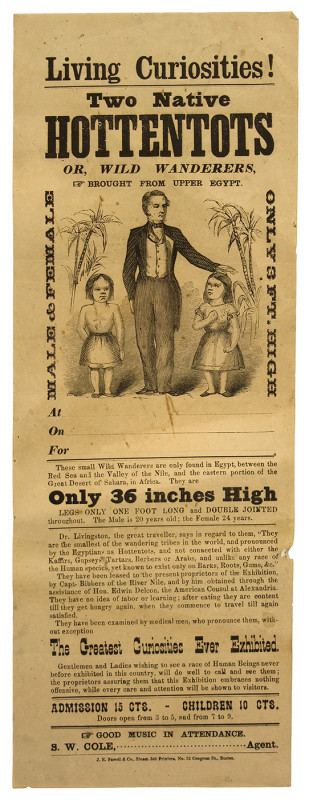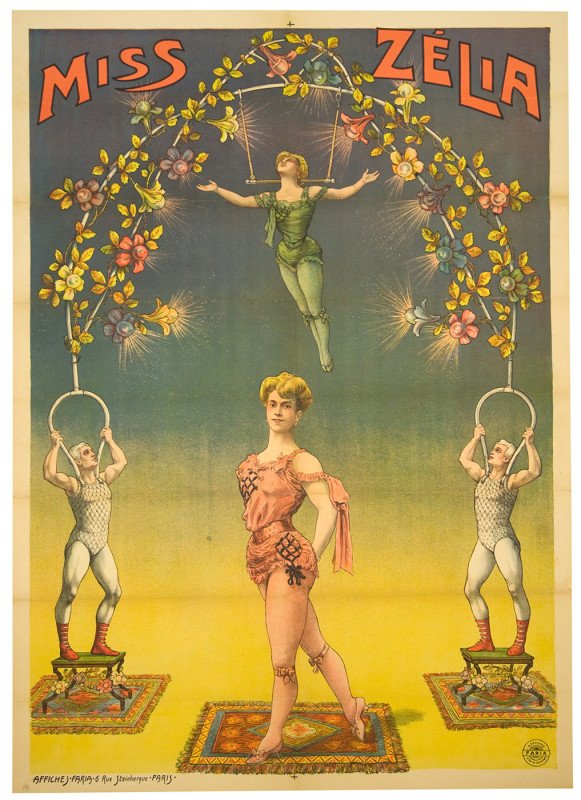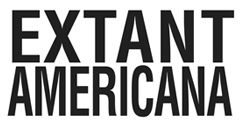Living Curiosities! Two Native HOTTENTOTS OR, WILD WANDERERS, BROUGHT FROM UPPER EGYPT

(Circus) Broadside, 14 3/4 x 5 3/8 in., “Living Curiosities! Two Native HOTTENTOTS OR, WILD WANDERERS, BROUGHT FROM UPPER EGYPT.” (Boston: J.E. Fa[r]well & Co., 32 Congress St., [c. 1850-1875*].)
A terrific broadside featuring amazingly inaccurate information with the gall to quote “Dr. Livingston[e], the great traveller… They are the smallest of the wandering tribes in the world, and pronounced by the Egyptians as Hottentots, and not connected with either the Kaffirs, Gupseys, Tartars, Berbers or Arabs, and unlike any race of the Human species, yet known to exist only on Barks, Roots, Bums, &c.’ They have been leased to the present proprietors of the Exhibition, by Capt. Bibbers of the River Nile, and by him obtained through the assistance of Hon. Edwin Delcon, the American Consul at Alexandria. They have no idea of labor or learning; after eating hey are content till they get hungry again, when they commence to travel till again satisfied.”
The Khoikhoi (or Hottentots as Europeans were inclined to call them) were not natives of Upper Egypt, but rather present-day Namibia in South West Africa. Despite gross misrepresentation, the proprietor’s wanted the general public to be assured that “this Exhibition embraces nothing offensive, while every care and attention will be shown to visitors.”
Small loss at center right margin, light toning and other minor pinholes, light creases, else very good.
(EXA 4489) $975
______________
* An examination of records in Worldcat and related sources reveals that the firm of J. E. Farwell issued imprints bearing the 32 Congress St. Address between 1846 and 1876. This broadside also references David Livingstone whose first work on Africa did not appear before 1850. In Boston, during the winter of 1861, the Boston Aquarial and Zoological Gardens featured an exhibit including “the KAFFIRS and HOTTENTOTS (back on a visit, prior to returning to their native land).” (Boston Herald, 4 Feb. 1861, 2).

